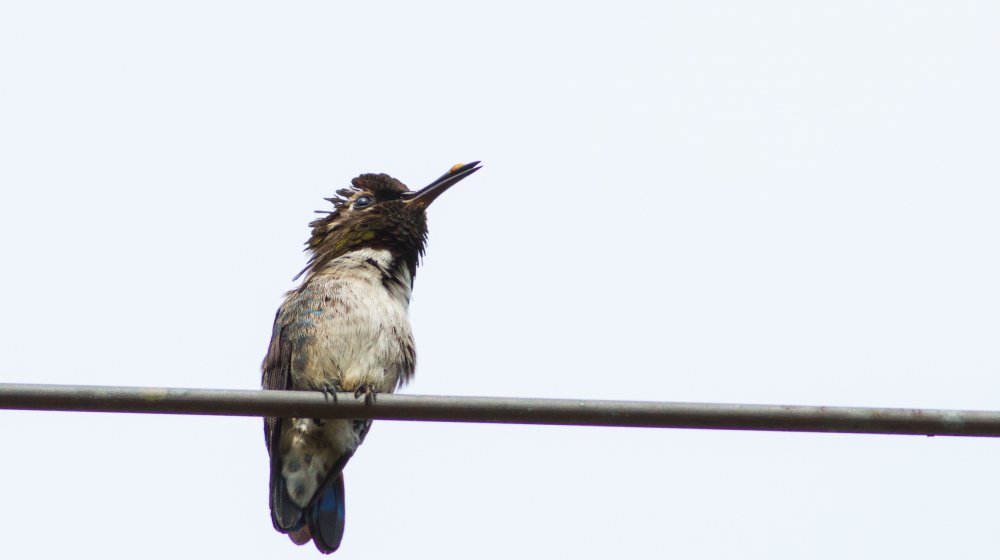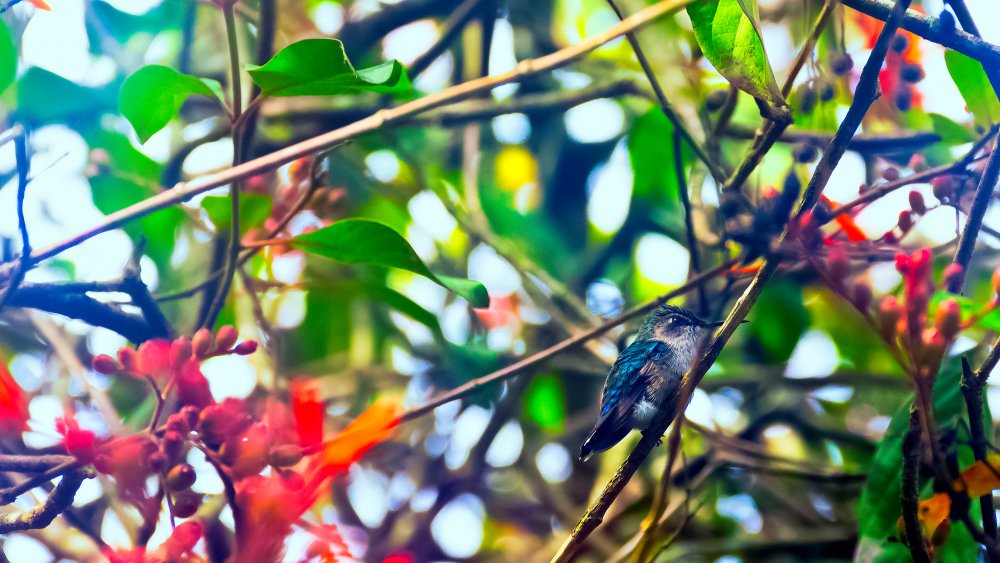This Is The Smallest Bird In The World
According to Guinness World Records, the world's smallest bird is the bee hummingbird, also known by its Latin name, Mellisuga helenae. Bee hummingbirds are exclusively found in Cuba and are so tiny that they are often mistaken for insects. Male bee hummingbirds measure an average of 57 millimeters (2.24 inches) in length and weigh about 1.6 grams (0.056 ounces), which is less than a dime; female birds are a bit larger. Reports One Kind Planet, these tiny birds build nests just 2.5 centimeters wide (less than an inch) out of lichen, bark, and cobwebs, in which they lay two eggs the size of green peas.
Their breeding season takes place between March and June and male hummingbirds form groups called leks in which they "sing and perform competitive mating displays to attract females." Hummingbirds are polygamous, so one male might mate with many females during this season. The eggs incubate over a period of just three weeks and while the babies hatch blind with no feathers, they leave the nest as soon as their wing feathers grow in, which takes less than a month.
Tiny. Very tiny
Because the bee hummingbird is so small, it competes with insects for resources, as opposed to other birds. Per One Kind Planet, bee hummingbirds eat flower nectar and occasional insects, consuming up to half their body weight per day while helping pollinate over 1,500 flowers in the process. According to Wired, they can beat their little wings up to 200 times per second and often slip into a state of "torpor," or deep sleep, to conserve the enormous amounts of energy it takes to be so small and move so fast.
How and why did bee hummingbirds evolve to be so dramatically tiny? Ecologist Bo Dalsgaard told Wired that the Caribbean islands as a whole are known for hosting different sizes of hummingbirds. In Cuba, the larger native species is the emerald hummingbird, which grows to be twice the size of the bee hummingbird. Dalsgaard explained that the emerald hummingbird probably came to Cuba first and established itself as the alpha species; bee hummingbirds then evolved to be smaller in order to compete with insects for food, instead of their larger counterparts, and carved out their niche within Cuba's ecosystem.

